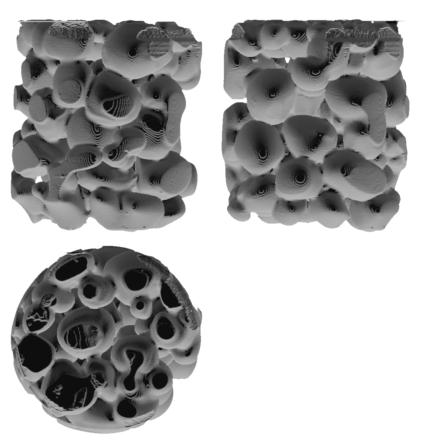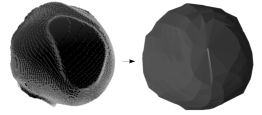Difference between revisions of "Snow documentation"
From Yade
| (10 intermediate revisions by 2 users not shown) | |||
| Line 1: | Line 1: | ||
| + | By Alsidqi Hasan |
||
| − | I suggest Alsidqi list questions about the snow module here (structure of the code, meaning/access of variables,...), so Janek can answer here and built the documentation at the same time. [[User:Bchareyre|Bchareyre]] 14:28, 25 August 2009 (UTC) |
||
| − | [[Category:NotFinishedPages]] |
||
| + | This development is supported by the French National Agency of Research (ANR), via the "Snow White" project (ANR-06-BLAN-0396-01). It is currently not part of the main Yade source, please contact [https://yade-dem.org/wiki/Authors_and_contributors#Yade_developers Bruno Chareyre] for more information. |
||
| − | Snow-Read Problems: |
||
| + | |||
| − | 1. Compiling Problems: |
||
| + | '''Introduction''' |
||
| − | a. I found problem like this: |
||
| + | |||
| − | VoxelEnvelope.cpp: In member function ‘void VoxelEnvelope::calculate_surfaces_loop_spawn(Config&)’: |
||
| + | A novel Discrete Element Method (DEM) employing polyhedral elements based on experimental data is developed. It is implemented in an algorithm that simulates a dynamic model of creep deformation based on observed snow grains packing. |
||
| − | VoxelEnvelope.cpp:27: error: ‘class boost::thread’ has no member named ‘detach’ |
||
| + | The model uses a grain-scale algorithm that requires geometrical input parameters from a |
||
| − | Solution: Modify theVoxelEnvelope.cpp by adding a line "#if BOOST_VERSION >= 103500" before "loop.detach();" (at line 27) and a line "#endif" after it. |
||
| + | three-dimensional (3D) scans of the observed snow grains packing. The 3D high resolution image was obtained from scanning a cylindrical snow specimen using Synchrotron X-ray Diffraction |
||
| + | Contrast Tomography (DCT) technique. |
||
| + | |||
| + | [[File:xrays.jpg|800px|thumb|left|A scanned ice grains packing.]] |
||
| + | |||
| + | A reconstruction algorithm is used to convert tomography data into a set of grains, represented as a set of parallel layers. The orientation of layers correspond to crystallographic planes, and the layers can slide relative to each other according to a viscous creep law, thus simulating the deformation of mono-crystaline ice grains. |
||
| + | |||
| + | [[File:Grain34.jpeg|800px|thumb|left|Geometry obtained after tomography (left), and polyhedral representation in Yade (right).]] |
||
Latest revision as of 11:55, 24 January 2011
By Alsidqi Hasan
This development is supported by the French National Agency of Research (ANR), via the "Snow White" project (ANR-06-BLAN-0396-01). It is currently not part of the main Yade source, please contact Bruno Chareyre for more information.
Introduction
A novel Discrete Element Method (DEM) employing polyhedral elements based on experimental data is developed. It is implemented in an algorithm that simulates a dynamic model of creep deformation based on observed snow grains packing. The model uses a grain-scale algorithm that requires geometrical input parameters from a three-dimensional (3D) scans of the observed snow grains packing. The 3D high resolution image was obtained from scanning a cylindrical snow specimen using Synchrotron X-ray Diffraction Contrast Tomography (DCT) technique.
A reconstruction algorithm is used to convert tomography data into a set of grains, represented as a set of parallel layers. The orientation of layers correspond to crystallographic planes, and the layers can slide relative to each other according to a viscous creep law, thus simulating the deformation of mono-crystaline ice grains.

